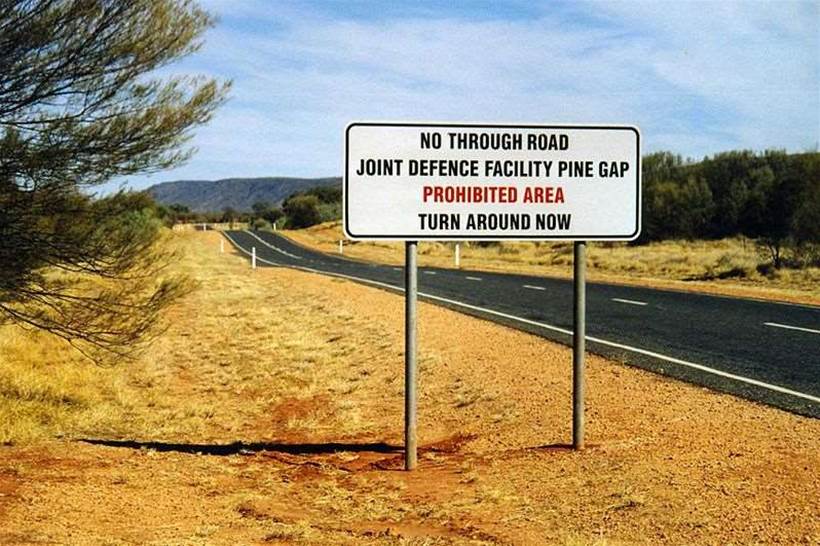Australian government employees at the Joint Defence Facility Pine Gap near Alice Springs continue to dwindle, with observers concerned about the strong corporate influence at the secretive intelligence site.
A study by the Nautilus Institute for Security and Sustainability, written by several Australian defence academics, notes that Australian government employees fell from 12 percent to 10 percent of the Pine Gap workforce between 2008 and 2015.
The fall is the equivalent of 16 less Australian government staff at Pine Gap, and was balanced with a similar increase in the number of US government staff at the facility over the same period.
However, government employees from both nations are dwarfed in number by contractors.
The study finds 40 percent of the 800-strong workforce at Pine Gap are Australian contractors – slightly down on 2005 numbers – and 30 percent are US contractors.
The Australian contractor numbers are thought to include “sub-contractors to US contractors”, meaning US corporate influence at the facility is likely to be even larger than the figures show.
“While the base is nominally a ‘joint United States-Australian facility’, virtually all of the major companies involved are US corporations or their Australian branches – further emphasising the already heavy asymmetrical character of the ‘jointness’ of Pine Gap,” the report stated.
“Moreover, corporations are not necessarily the best or most objective interpreters of US-Australian security and intelligence priorities or Australia’s national interests."
One issue the study seeks to expose is the “’symbiotic relationship between the US intelligence community and the private sector”.
“Advocates of the outsourcing of US intelligence work maintain that two key requirements of contemporary intelligence are ‘flexibility’ and a capacity to ‘surge’ operations in response to a changing environment,” the report notes.
“In support of the need for such a surge capacity, advocates often point to the post-9/11 environment.
“Yet a decade and a half later, elevated contractor numbers show no sign of diminishing.”
The high imbalance between government employees and contractors at Pine Gap means “the question of whether this facility, which the Australian government maintains operates with its ‘full knowledge and consent’, does so in the national interests of both governments, or indeed, the wider human interest, needs closer assessment".
Pine Gap’s main purpose continues to be as a ground control station for CIA-developed signals intelligence satellites, although it also acts as a communications relay for other defence installations.
“It probably remains the CIA’s most important technical intelligence collection station in the world,” the report stated.
Corporations have been involved in Pine Gap facility since its beginnings in the 1960s, when Collins Radio Company was named prime contractor. This changed in the late 1970s when technology firms including IBM were added.
In 2015, the corporate presence at the site includes Raytheon, Boeing, Northrop Grumman, General Dynamics, IBM and HP.
The same Nautilus thinktank was responsible for another report on Pine Gap earlier this year which showed it had taken on a new role collecting intercepted satellite communications traffic on behalf of the ‘Five Eyes’ intelligence alliance.









